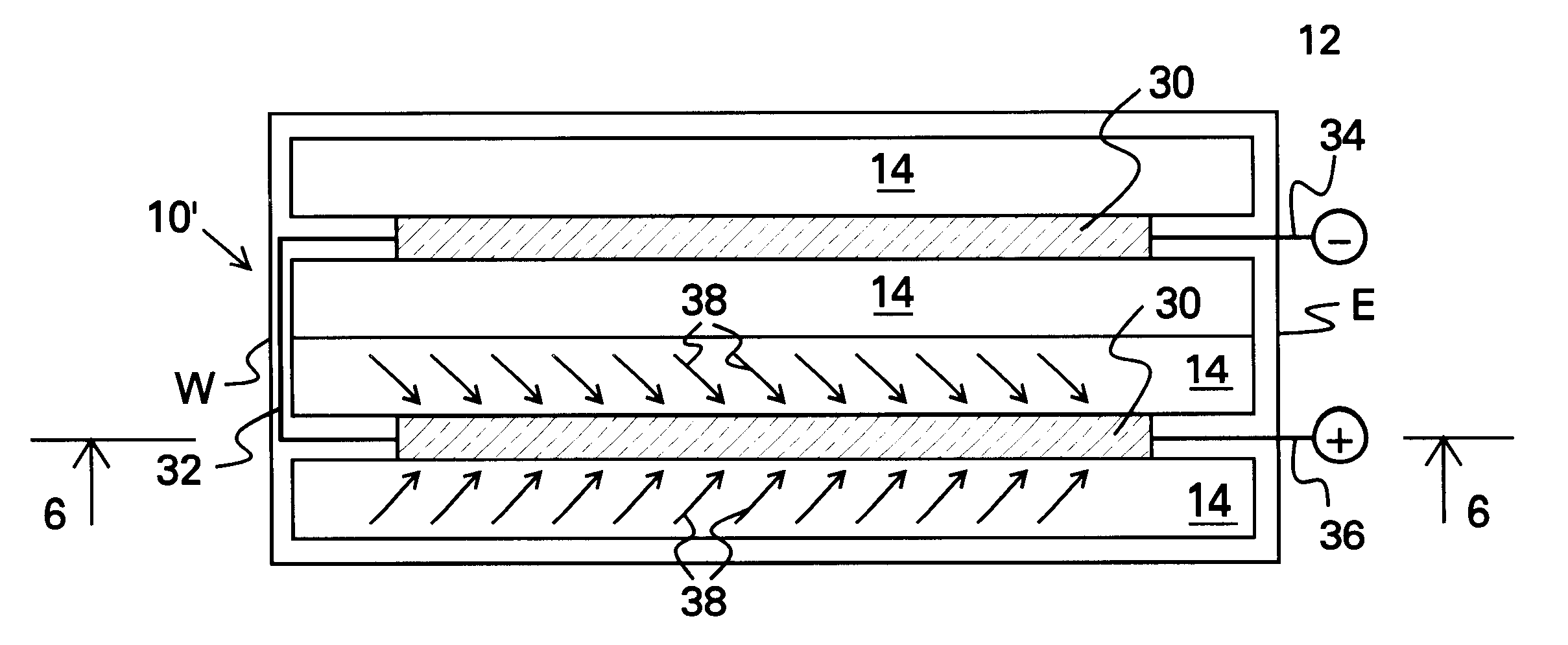Device for concentrating optical radiation
a technology of optical radiation and concentrator, applied in the direction of optical radiation measurement, instruments for comonautical navigation, instruments, etc., can solve the problems of not providing any passive solar tracking ability, inefficient light direction, and needing a tracking mechanism, so as to minimize waste heat, minimize costs, and select bandwidth capability
- Summary
- Abstract
- Description
- Claims
- Application Information
AI Technical Summary
Benefits of technology
Problems solved by technology
Method used
Image
Examples
example 1
Devices comprising a multiplexed (angular, spectral, and spatial) holographic film bonded to a low iron glass plate have been fabricated with large angular acceptance. A gelatin holographic film was coated onto a 3 mm thick, low iron glass plate (Solarphire Glass). Holographic optical elements were recorded into the film using an argon ion laser set to a wavelength of 488 nm.
The film plate is then bonded to another 3 mm thick, low iron glass plate (Solarphire glass) utilizing EVA adhesive from Springbom Labs. EVA is a common adhesive used in photovoltaic module construction. A photovoltaic cell was then bonded to the rear surface of the glass utilizing NOA 61 optical adhesive. The back surface of the cell was then protected by bonding a thin aluminum plate to the back of the cell with a conventional 3M very high bond double sided tape. The device measured 6 inches by 9 inches. The PV cell was 1 inch wide and 4 inches long. The holographic regions extended beyond the edge of the cell...
example 2
A dual holographic film layer device was constructed in the same fashion as described in Example I above with the only difference being an additional holographic film layer added to the second piece of glass. The two film layers collected energy from different parts of the solar spectrum due to the difference in the HOEs. The combined stack of two films formed an angularly and spatially multiplexed device for collection of solar energy over a broad range of input angles. The first film collected energy in the visible part of the spectrum (about 400 to 700 nm) and the second hologram collected infrared energy (about 700 to 1100 nm). Peak diffraction efficiency was 65%. Measured electric conversion efficiency for the device was 6.1%. The device collected energy from a 160 degree daily angular variation and a 45 degree seasonal variation in input angle.
While the above description contains many specific details, these should not be construed as limitations on the scope of the invention,...
PUM
 Login to View More
Login to View More Abstract
Description
Claims
Application Information
 Login to View More
Login to View More - R&D
- Intellectual Property
- Life Sciences
- Materials
- Tech Scout
- Unparalleled Data Quality
- Higher Quality Content
- 60% Fewer Hallucinations
Browse by: Latest US Patents, China's latest patents, Technical Efficacy Thesaurus, Application Domain, Technology Topic, Popular Technical Reports.
© 2025 PatSnap. All rights reserved.Legal|Privacy policy|Modern Slavery Act Transparency Statement|Sitemap|About US| Contact US: help@patsnap.com



